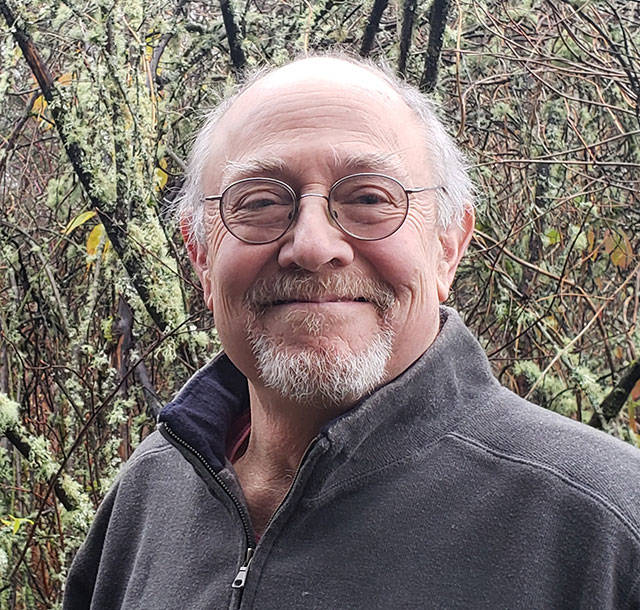Earlier this month I was lucky enough to be standing on a bridge over Judd Creek in Paradise Valley on a cold clear morning. I leaned back against the bridge railing and watched the low sun sparkle through the nearly leafless streamside forest.
I listened to the creek burble steadily on its way from Island Center Forest to Quartermaster Harbor. Now and then a spent alder or salmonberry leaf let go and drifted down to join collections of yellow and brown leaves along the edges of the streambed. I felt the cold air and just a kiss of sunshine on my face. I felt present and at peace in that moment, a state of being that’s been all too rare for me lately.
As a trained ecologist, I also “saw” more than what my senses and feelings experienced at that moment. Embedded within my experience was also an awareness of everything I knew about the life of the place – the aquatic insects working among the algae and leaf detritus in the streambed, the coho salmon that would soon be making their way along the stream to spawn, the spring flush of flower blossoms and new greenery on skunk cabbage, salmonberry, alder and the rest of the plant community, the rising crescendo of spring music as songbirds from Central and South America add their voices to the birds who’ve stayed here all along.
What I saw, even felt, at that moment was something of the pulse of an ecosystem. You don’t have to be an ecologist to appreciate the vitality of a place like this – but, for me, everything I learn enhances my experience.
The ecosystem I was appreciating, consciously and unconsciously, is known as a riparian area.
Riparian areas are the lands alongside rivers and streams that are strongly influenced by the adjacent aquatic environment. These places, the streamside transitions between land and water, are vibrant places important to humans and critical for conserving wildlife in the 21st century.
Although stream and riparian ecosystems occupy only a small portion of our landscapes, acre-for-acre they provide more vital wildlife habitat than any other part of our landscapes. In the Pacific Northwest, riparian areas have received attention for their critical contributions to salmon spawning and rearing habitats, but the Washington Department of Fish and Wildlife says that 85 percent of Washington’s wildlife species need riparian habitats for some or all of their essential life activities. This means everything from stream insects and pollinators, to songbirds, to deer, bear and elk, and much more.
Stream and riparian systems are also an important source of resources and services for people, including fish production, flood attenuation, carbon sequestration and groundwater recharge. In the Puget Lowlands, intensive logging, farming and development have occurred without much consideration for the natural functions of stream and riparian systems, reducing their ability to provide these resources and greatly diminishing their capacity to support fish and wildlife.
Stream and riparian systems are rightly recognized as public resources at the state, county and local levels. Here on Vashon, we are fortunate that our two largest stream systems – Shinglemill Creek and Judd Creek – have been the long-term focus of protection and restoration by the Vashon-Maury Island Land Trust and King County.
In the last decade, in particular, both drainages have seen important property acquisitions, improvements in stream channel habitat, a dedicated effort to control invasive plant species and the planting of thousands of native trees and shrubs. These last two parts of the effort have benefited greatly from the involvement of many island volunteers.
To enrich our engagement with these places, in January, Vashon Audubon will offer a short webinar course exploring the secrets and the science of these vital parts of our community. Riparian areas are places of beauty, wonder and discovery, and we can learn together how to better appreciate, protect and restore these ecosystems for the benefit of all.
Vashon Audubon’s workshop, Riparian Ecosystems of Vashon Island, led by Jim Evans, will be held via Zoom on two Thursday evenings, from 6:30 to 8:00 p.m. Jan. 14 and 21, and includes an optional three-hour socially distanced field trip to riparian areas on Vashon.
The field trip will be offered in two sections, Saturdays, Jan. 16 and 23, with each trip limited to six participants. Overall enrollment is limited to 12 participants. Please register by contacting Sylvia Soholt at sylvia@sylvansanctuary.com.
Jim Evans, an ecologist and educator, serves on the Vashon Audubon board.



